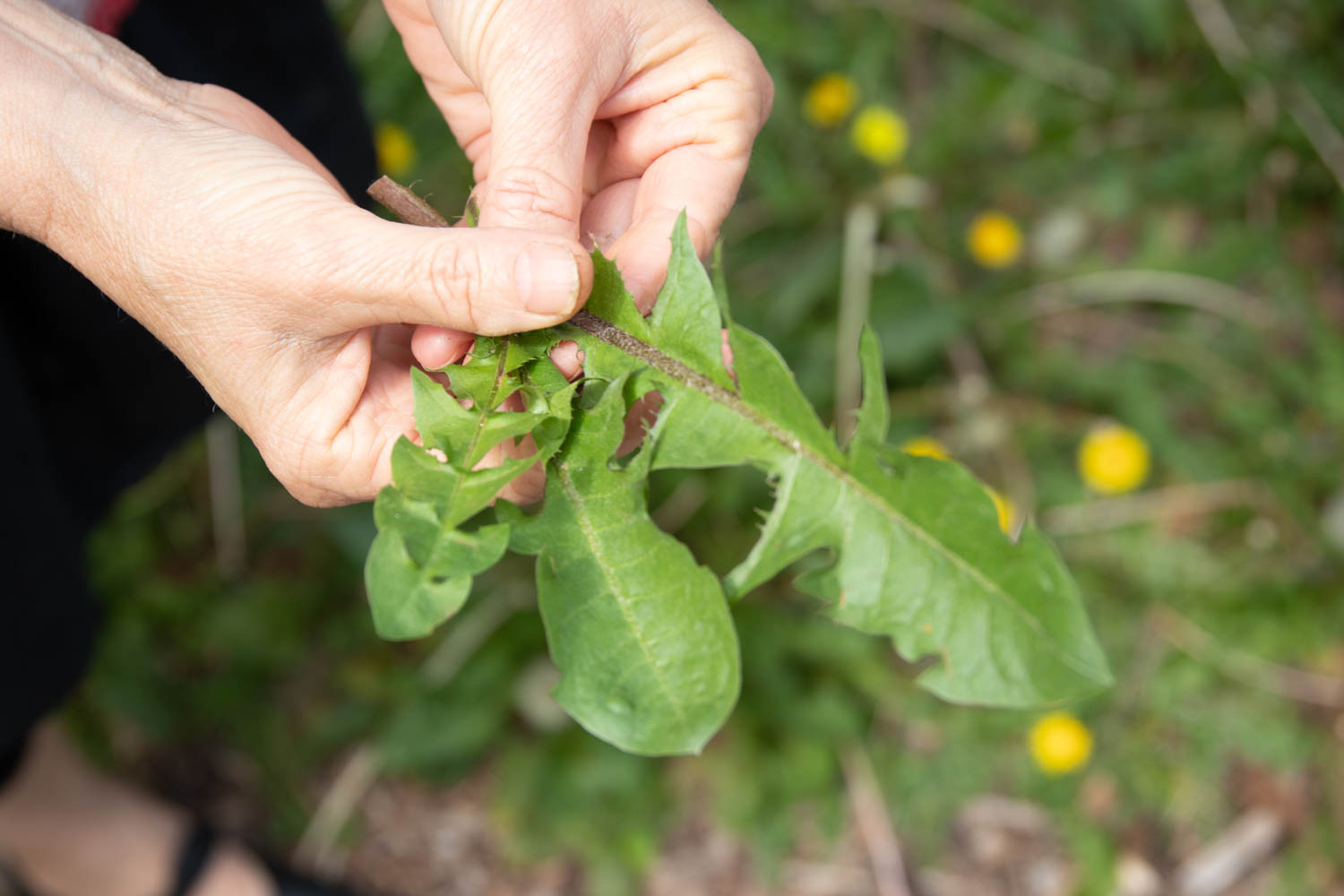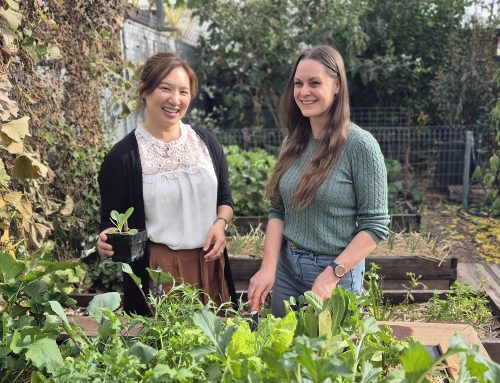
On a sunny spring day a few weeks back, I headed to Port Noarlunga South, about 30km south of Adelaide, for a ‘herb walk and talk’ through the garden of medical herbalist, Patrizia Bronzi.
It’s a rather small space, the type of urban block in which the house occupies half the land, and therefore a wonderful example of how much goodness can be packed in to city-living gardens. No giant farms needed here.
“Let’s go and meet the plants,” Patrizia said, and we were off.
Weeds as medicine: pick them, don’t posion them
Straight up, it was clear that Patrizia values weeds as medicinals just as much as any carefully cultivated plant — a woman after my own heart.
“Weeds” grow freely all around us, are often really nutritious or beneficial for us, and some even seem to pop up right at the times of the year we really need them (chickweed is a good example, see below).
Rather than posioning them, we can make great use of these valuable resources to keep ourselves healthy and happy, inside and out.
Nettle

Stinging nettle is Mother Nature’s healer, so nourishing and iron rich, Patrizia likened it to having a blood transfusion. “It’s a magical plant,” she said.
The young leaves are best for eating, warmed in soups and stews, which neutralises their sting. Older leaves are great for juicing and drying for making plant extracts. And once nettle goes to seed, the seeds can be collected and eaten like hemp seeds.
Chickweed

This lovely little weed comes just after winter to help us breakdown accumulated fats, Patrizia told us. It can be also be helpful for those suffering ovarial cysts.
It’s delicious eaten fresh in salads — but don’t overdo it, as chickweed can cause violent tummy upsets in excessive doses.

A tip for foragers: petty spurge looks very similar to chickweed in its infancy. Don’t mistakenly eat this one! To make sure you’ve got the right thing, break a stem — petty spurge will have a white sap, chickweed won’t.
Cleavers

Cleavers are already a favourite spring herb in our household, both for us humans and for our chickens. It’s a lymphatic plant, Patrizia said, healing for skin issues when eaten or applied externally as a cream or tincture. Great for juicing too, apparently.
Dandelion

Much can be said about dandelion, a maligned weed that so few people seem to value despite its incredibly potent powers. In our biodynamic garden, we use dandelion in the form of the 506 prep, its influence said to give plant and soil life powerful access to silica.
Dandelion is excellent for human health, too — particularly the liver. I loved this little tip from Patrizia: before a meal, pick a dandelion flower, wipe the white fluff off the stem then chew the lot. It will be bitter, a sure sign it’s a great digestive.

Or chuck the leaves in a salad — the younger the better, as they become more bitter and tough with age.
What’s in a name? ‘Officinalis’, hopefully.
Botanical names of plants are a window into the medicines we as humanity relied upon before the pharmaceutical industry was born.
Patrizia gave us this fabulous nugget of wisdom: if you spot ‘officinalis’ in a plant’s botanical name, it’s a sure sign this species was an official medicine in years gone by.

This can be helpful when seeking to plant herbs for future medicinal use. Hundreds of species of rosemary exist, for example, but you’d be best to choose rosmarinus officinalis for your medicinal herb garden.
Other wonderful things learned about individual herbs
Patrizia ran us through so many herbs, it’s impossible to mention them all here. The walk and talk format, I feel, is designed to open people’s eyes to all the amazing properties and possibilities of plants, perhaps inspiring further exploration.
But let me note just a few more specifics that particularly caught my eye.
Costmary

This drought-tolerant old English herb is a strong digestive, Patrizia told us; slip just a single leaf into a salad.
Its large, oblong leaves make for great bookmarks, and its fragrance helps to keep silverfish away — hence why it’s also known ‘Bible leaf’ (and by a ton of other names, too).
Rue

Patrizia suggests growing Rue along pathways that provide entry to your house, as this drought-tolerant plant works to clear negative energey. She has a giant hedge running along her own driveway, beautiful to see in flower.
Mullein

This lovely plant generally lives for two years, developing large, low-lying leaves in its first year and then sending a huge flower skyward the second year, before going to seed and dying.
The root, Patrizia told us, is excellent for skeletal problems such as bulging discs — but it must be harvested in the first year.
Tips for best ways to pick herbs for eating and drying
At our place, we try to incorporate herbs into our daily life — via homemade loose leaf herbal teas sipped each morning, made simply by steeping in hot water plants fresh-picked from our garden or dried weeks before; in our salads and cooking; and as a calendula salve I make batches of every few months.
The ‘to wash or not’ question is always a tricky one, as herbs need to be clean for use but they’ll take far longer to dry if damp when picked.

Which is why I loved this tip from Patrizia: wash your herbs with rainwater the day before you plan to pick them. Or harvest the day after rain! This way, the plants will be clean, dry and dust-free for harvesting.
Try to harvest on a relatively sunny day, before lunch, she said. Picking later in the day isn’t ideal, as the plants will off-gas their wondrous volatile oils in the sun.
Bringing home Patrizia’s herbs to my own garden
A couple hours later, we left with tote bags full of free cuttings and seeds, plus a few purchased extras such as Patrizia’s homemade tinctures for this ailment or that.

If you live in the area, check out Patrizia’s Facebook page and head along to one of her fabulous workshops. They’re well worth it.
“Herbalism is simple, but the knowledge is extensive — it’s beyond what can be learned in a lifetime,” Patrizia said. “So I have an amazing job. I’ll never stop learning.”
Extra reading:
One last thing — if you’re interested in plants as medicine, my absolute favourite, refer-to-every-week book is How Can I Use Herbs In My Daily Life by Isabell Shipard (an Australian author).


![[Video] Take a walk through my urban Adelaide permaculture garden](https://korenhelbig.com/wp-content/uploads/2024/06/Forward-Thinkers-video-500x383.png)

